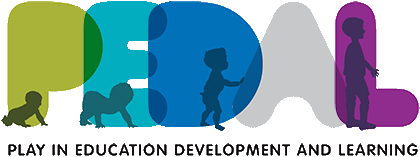While separate pieces of research found parents offer toddlers cues to express that they are (1) joking and (2) pretending, and that toddlers and preschoolers understand intentions to (1) joke and (2) pretend, it is not yet clear whether parents and toddlers consider joking and pretending to be distinct concepts. This is important as distinguishing these two forms of non-literal acts could open a gateway to understanding the complexities of the non-literal world, as well as the complexities of intentions in general. Two studies found parents offer explicit cues to help 16- to 24-month-olds distinguish pretending and joking. Across an action play study (n = 25) and a verbal play study (n = 40) parents showed more disbelief and less belief through their actions and language when joking versus pretending. Similarly, toddlers showed less belief through their actions, and older toddlers showed less belief through their language. Toddlers’ disbelief could be accounted for by their response to parents’ language and actions. Thus, these studies reveal a mechanism by which toddlers learn to distinguish joking and pretending. Parents offer explicit cues to distinguish these intentions, and toddlers use these cues to guide their own behaviors, which in turn allows toddlers to distinguish these intentional contexts.
